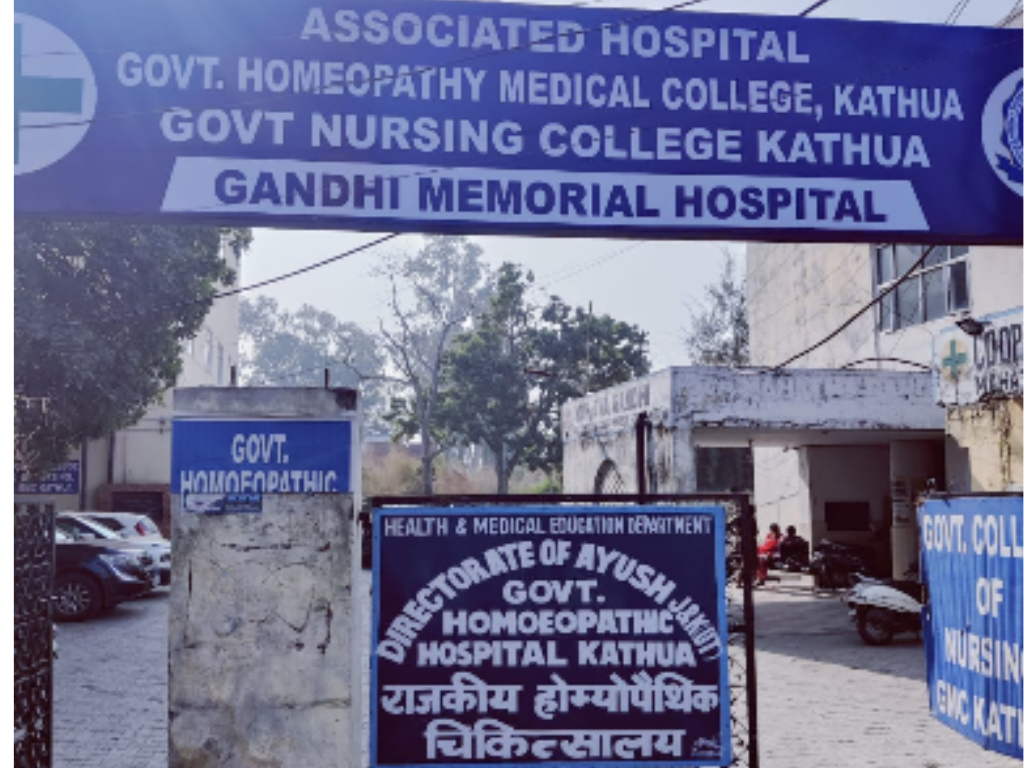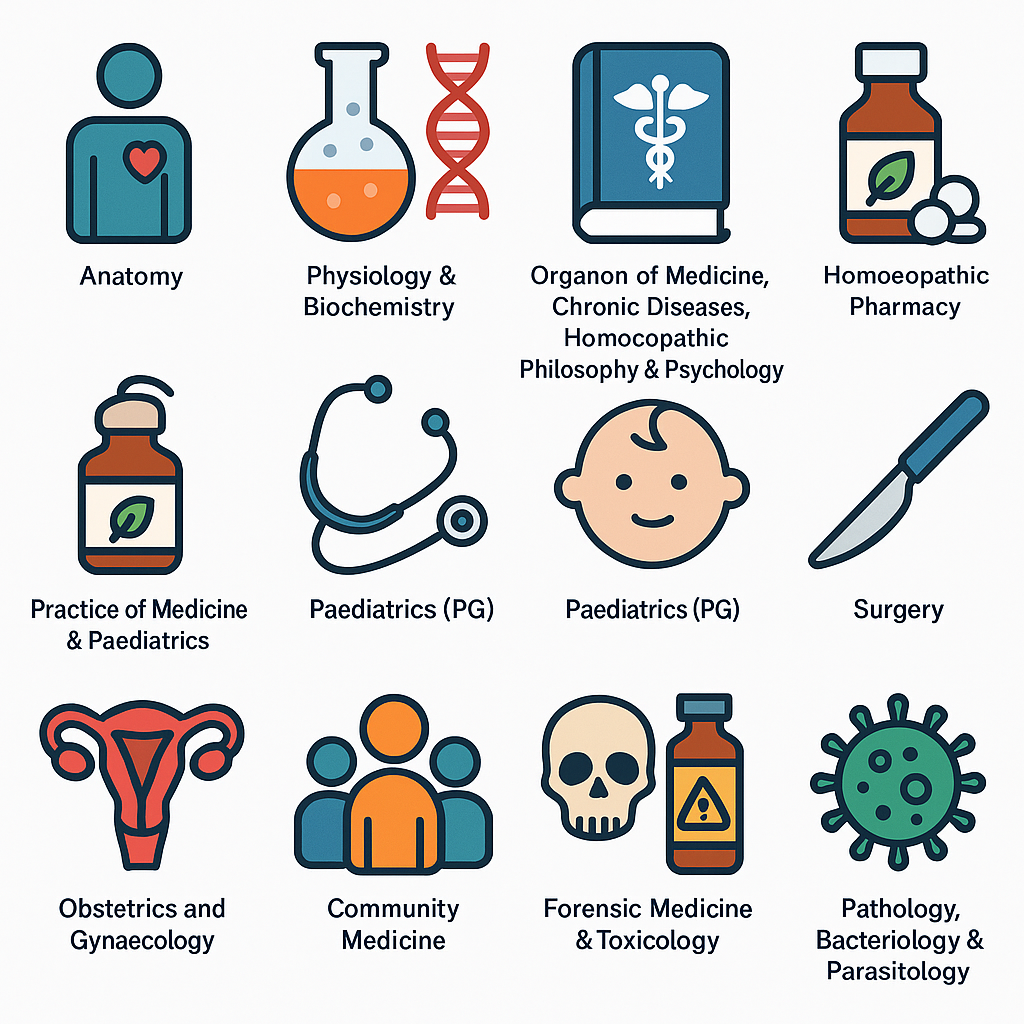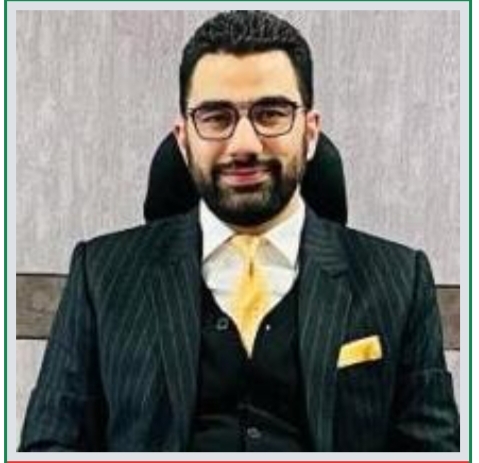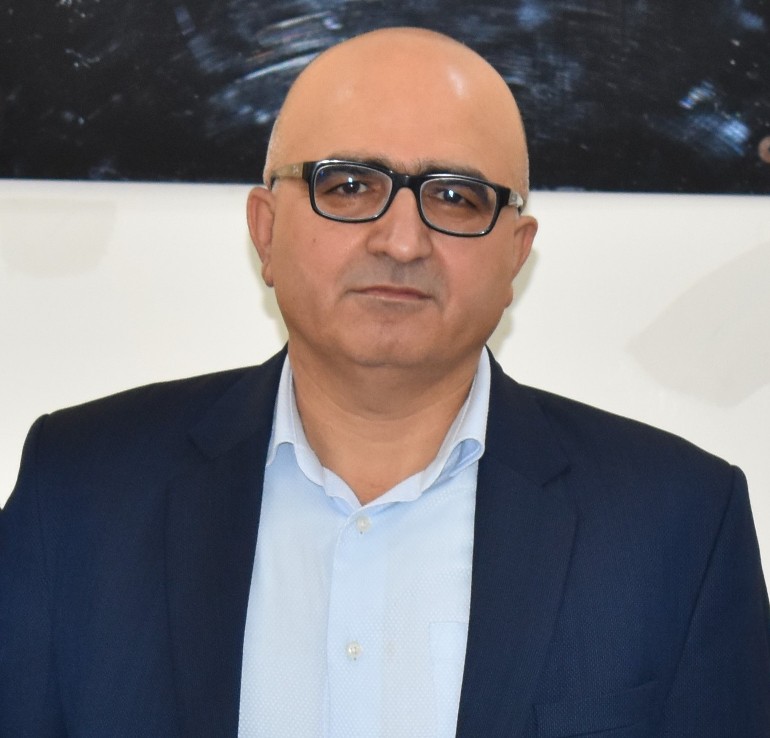Notices :
Homoeopathy
Homoeopathy was discovered by a German Physician, Dr. Christian Friedrich Samuel Hahnemann (1755-1843), in the late eighteenth century. It is a therapeutic system of medicine premised on the principle, “Similia Similibus Curentur” or ‘let likes be treated by likes'. It is a method of treatment for curing the patient by medicines that possess the power of producing similar symptoms in a healthy human being simulating the natural disease, which it can cure in the diseased person. It treats the patients not only through holistic approach but also considers individualistic characteristics of the person. This concept of ‘law of similars' was also enunciated by Hippocrates and Paracelsus, but Dr. Hahnemann established it on a scientific footing despite the fact that he lived in an age when modern laboratory methods were almost unknown. Homoeopathic medicines are prepared from traces of animal, plant, mineral and other natural substances, by a standard method called dynamisation or potentisation, which comprises of successive dilutions and succussions to raise the inherent curative power of the drugs to maximum. The medicines thus prepared through ‘potentisation', attain their potential enhanced enormously to combat ailments while at the same time absence of toxicity is assured. The medicines are usually proved in healthy human beings, to ascertain their curative properties. The system believes in the existence of a self- regulating force in the organism, which plays a vital role during health, disease and cure. The symptoms are considered as the body's natural reaction to the illness and help to find a remedy against the illness. The remedies work by stimulating the body's defense mechanism to correct itself naturally. This therapy adopts an individualistic and holistic approach towards the sick individual. A homoeopathic doctor does not treat in the name of disease, rather the treatment is targeted against the “patient” who is suffering from a particular disease. The physician perceives all the derangements at physical and mental levels of the patient, brings about conceptual image of the patient through totality of symptoms and selects the medicine, which is most similar to the symptomatic totality of the patient.
Read MoreAbout Us
Total land measuring 57 Kanals and 1 Marla situated at village Rakh Hoshiyari district Kathua has been transferred to the Department of Health and Medical Education for the construction of the Govt. Homoeopathic Medical College and Hospital Kathua.

Brief Introduction :
- Letter of Permission for starting 1st Batch of BHMS for session 2024-25 received from the National Commission of Homoeopathy (NCH).
- Principal GMC Kathua Dr. S.K Attri has been assigned with the additional charge of the Principal Govt. Homoeopathic Medical College and Hospital Kathua.
- Total 9 Post Graduates have been deployed to the Govt. Homoeopathic Medical College and Hospital Kathua from the Directorate of the AYUSH for starting the first batch of the BHMS course.
- Total 7 Medical Officers have been deployed to the Govt. Homoeopathic Hospital Main Bazaar Kathua from the Directorate of the AYUSH for starting the Hospital services as the pre requisite for starting the Homoeopathic Medical College.
- Total 6 Pharmacists have been deployed to the Govt. Homoeopathic Hospital Main Bazaar Kathua on rotational basis from the Directorate of the AYUSH.
Medical Officers
Departments
Pharmacists
Post Graduates
Departments
View All
Anatomy
Anatomy plays a vital role in Homoeopathy by helping practitioners understand the structure and function of the human body. It aids in identifying symptoms, locating affected organs, and distinguishing between functional and structural issues. While Homoeopathy focuses on treating the whole person, anatomical knowledge supports accurate case analysis and remedy selection. It bridges physical signs with the patient's mental and emotional state, ensuring a truly holistic approach to healing.

Physiology & Biochemistry
Physiology helps homoeopaths understand the normal functions of the body, allowing them to recognize abnormal changes during illness. It provides insight into how various systems interact and how symptoms reflect internal imbalances.
Biochemistry explains the chemical processes within the body, supporting the understanding of metabolism, nutrition, and cellular activity. In Homoeopathy, it aids in evaluating disease processes and selecting remedies that stimulate natural healing on a cellular level.
Together, physiology and biochemistry form the scientific foundation for accurate case-taking, analysis, and holistic treatment.

Organon of Medicine, Chronic Diseases, Homoeopathic Philosophy & Psychology
The foundation of Homoeopathy lies in the Organon of Medicine, authored by Dr. Samuel Hahnemann, which outlines the guiding principles of homoeopathic healing. It emphasizes individualization, minimal dosing, and treating the root cause of illness rather than just symptoms. In his later work on Chronic Diseases, Hahnemann introduced the concept of miasms—deep-seated causes behind long-standing ailments—highlighting the need for long-term, constitutional treatment. Homoeopathic philosophy takes a holistic approach, viewing health as a balance of physical, mental, and emotional well-being, governed by a vital force. Within this, homoeopathic psychology plays a key role by understanding a patient's mental and emotional traits, which are essential for selecting the most suitable remedy and achieving true healing.

Materia Medica & Homoeopathic Therapeutics
Materia Medica in Homoeopathy is a detailed compilation of remedies, describing their symptoms, source, and sphere of action based on provings and clinical experience. It helps practitioners understand how each remedy affects the mind and body across various conditions.
Homoeopathic Therapeutics applies this knowledge to clinical practice by guiding remedy selection for specific diseases or conditions. It bridges the gap between theoretical remedy knowledge and practical application, helping the physician choose the most suitable remedy based on symptom similarity and individuality.
Together, they form the core of homoeopathic treatment—combining knowledge of remedies with the art of applying them to each unique patient.

Homoeopathic Pharmacy
Homoeopathic Pharmacy deals with the preparation, preservation, and dispensing of homoeopathic medicines. It follows specific methods like potentisation (dilution and succussion) to enhance the healing power of natural substances while ensuring safety and non-toxicity. The raw materials—sourced from plants, minerals, animals, and other natural origins—are processed according to strict guidelines laid down in homoeopathic pharmacopoeias.
This branch ensures the quality, purity, and standardization of remedies, playing a vital role in the effectiveness of homoeopathic treatment.

Practice of Medicine & Paediatrics
Practice of Medicine in Homoeopathy involves the study and management of various acute and chronic diseases using homoeopathic principles. It emphasizes understanding the disease process, observing the totality of symptoms, and selecting remedies that stimulate the body's natural healing. Paediatrics in Homoeopathy focuses on treating children holistically—from infancy through adolescence. It addresses common childhood issues like infections, allergies, behavioral problems, and developmental disorders, using gentle, non-toxic remedies that support the child's overall growth and immunity. Together, these areas ensure a comprehensive and individualized approach to patient care across all age groups.

Paediatrics (PG)
Paediatrics at the postgraduate level in Homoeopathy involves advanced study and clinical management of childhood diseases through a holistic lens. It emphasizes individualized treatment based on the totality of symptoms, considering physical, mental, and emotional development in children from birth through adolescence.
Postgraduate training focuses on in-depth understanding of growth milestones, congenital disorders, nutritional deficiencies, behavioral issues, and chronic conditions. Emphasis is placed on selecting appropriate remedies that not only address acute complaints but also promote long-term health and immunity.
Homoeopathic PG Paediatrics blends classical principles with modern child healthcare, equipping practitioners to deliver safe, gentle, and effective treatment for the evolving needs of young patients.

Surgery
In Homoeopathy, surgery is not typically the first line of treatment; however, it is recognized as a necessary intervention for certain physical conditions. Homoeopathic remedies can complement surgical treatment by promoting faster healing, reducing inflammation, and preventing complications like infections.
Homoeopathic remedies are often used pre- and post-surgery to enhance the body’s ability to recover, reduce pain, and support overall healing. Remedies are chosen based on the patient's individual constitution, symptoms, and the specific nature of the surgery, ensuring the body’s vital force is optimally supported throughout the process.

Obstetrics and Gynaecology
In Homoeopathy, Obstetrics and Gynaecology focus on the holistic care of women, addressing both reproductive health and pregnancy-related issues. Homoeopathic remedies are used to treat a wide range of conditions such as menstrual disorders, premenstrual syndrome (PMS), infertility, menopause, and other gynecological ailments by considering the patient’s physical, emotional, and constitutional state.
During pregnancy, homoeopathic remedies help manage symptoms like nausea, fatigue, and anxiety while supporting the natural course of labor and delivery. Postpartum care also benefits from Homoeopathy to promote healing, balance hormones, and address any emotional or physical issues.
By working on the vital force, Homoeopathy provides gentle, non-invasive alternatives to conventional treatments, promoting overall well-being for women at all stages of life.

Community Medicine
Community Medicine in Homoeopathy focuses on promoting public health and preventing disease through holistic and individualized care. It emphasizes the role of Homoeopathic remedies in managing epidemics, controlling infectious diseases, and addressing common health issues in communities, such as allergies, respiratory infections, and chronic conditions.
Homoeopathic principles in Community Medicine aim to improve overall health outcomes by educating communities, promoting natural remedies, and encouraging preventive care. By focusing on the individual as part of a larger social and environmental context, Homoeopathy offers a comprehensive, non-toxic, and sustainable approach to public health.

Forensic Medicine & Toxicology
In Homoeopathy, Forensic Medicine plays a supportive role in understanding the legal and medical aspects of cases involving trauma, death, and injury. Homoeopathic remedies can aid in the recovery from physical injuries, emotional trauma, and conditions resulting from accidents or violence. Additionally, it can be used in managing symptoms like shock, pain, and inflammation following such events.
Toxicology in Homoeopathy focuses on the safe use of substances and remedies, ensuring non-toxic, natural treatment options for poisoning, overdoses, and side effects of chemicals or drugs. Homoeopathic remedies are selected based on the totality of symptoms to support detoxification and aid in the body's healing after exposure to toxins, whether accidental or intentional.
Homoeopathy, while not a primary treatment in forensic cases, can be a complementary approach to recovery and symptom management.

Pathology, Bacteriology & Parasitology
In Homoeopathy, Pathology refers to understanding the underlying causes and mechanisms of disease. While Homoeopaths focus on treating the patient as a whole, knowledge of pathological processes is essential for recognizing the signs and symptoms that indicate specific conditions. This understanding helps in selecting the most appropriate remedy based on the totality of symptoms, not just the pathology.
Bacteriology and Parasitology in Homoeopathy examine the role of bacteria and parasites in causing disease. While Homoeopathy does not target the pathogens directly, remedies are selected to strengthen the body’s vital force and support its natural immune response, enabling the body to deal effectively with infections. Homoeopathic remedies work by stimulating the body’s defenses, addressing symptoms, and promoting overall healing without the side effects typically seen with conventional treatments.
In these areas, Homoeopathy offers a complementary approach, focusing on the person’s overall health and vital force, while recognizing the influence of microbial and parasitic factors.

Repertory
The Repertory Department of Homoeopathy focuses on training students in the effective use of repertories for accurate homoeopathic prescribing. It combines classical repertories like Kent’s and Boenninghausen’s with modern software tools such as RADAR and Hompath. The department emphasizes case-taking, rubric analysis, and repertorial training through lectures, seminars, and clinical exposure. With a blend of traditional knowledge and digital advancements, it equips future practitioners to deliver precise, individualized patient care.

Notifications
Gallery
View All






.jpg)
.jpg)
.jpg)
.jpg)
.jpg)
.jpg)